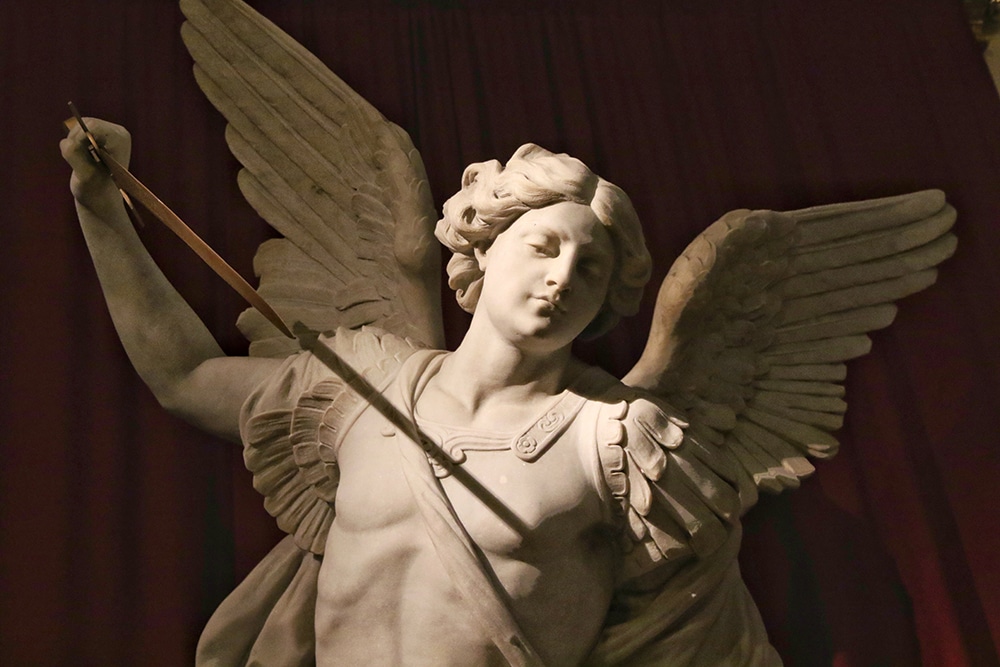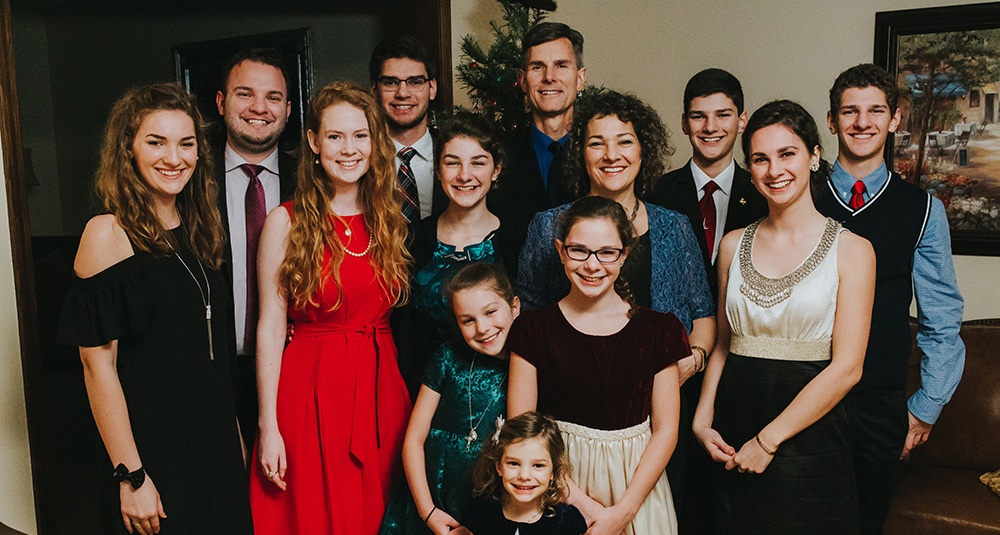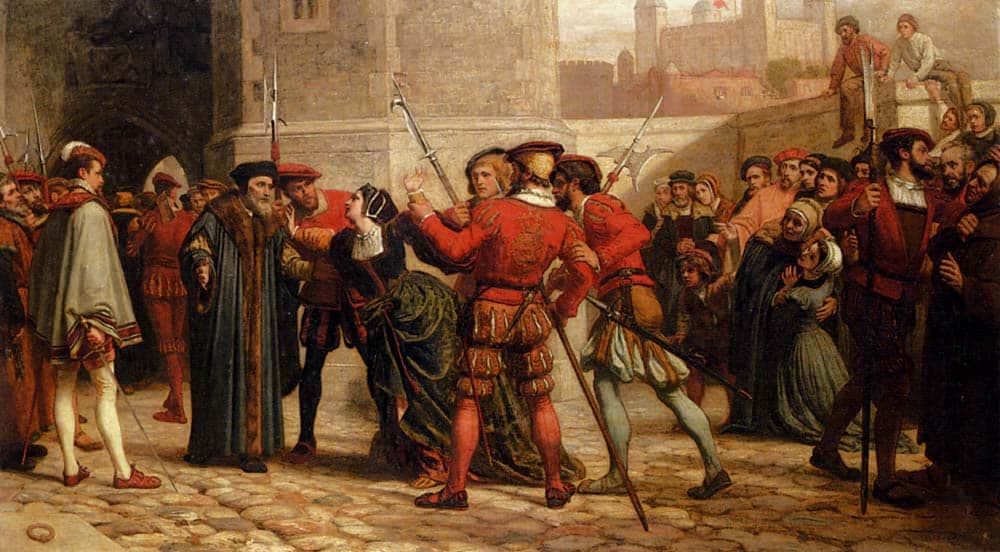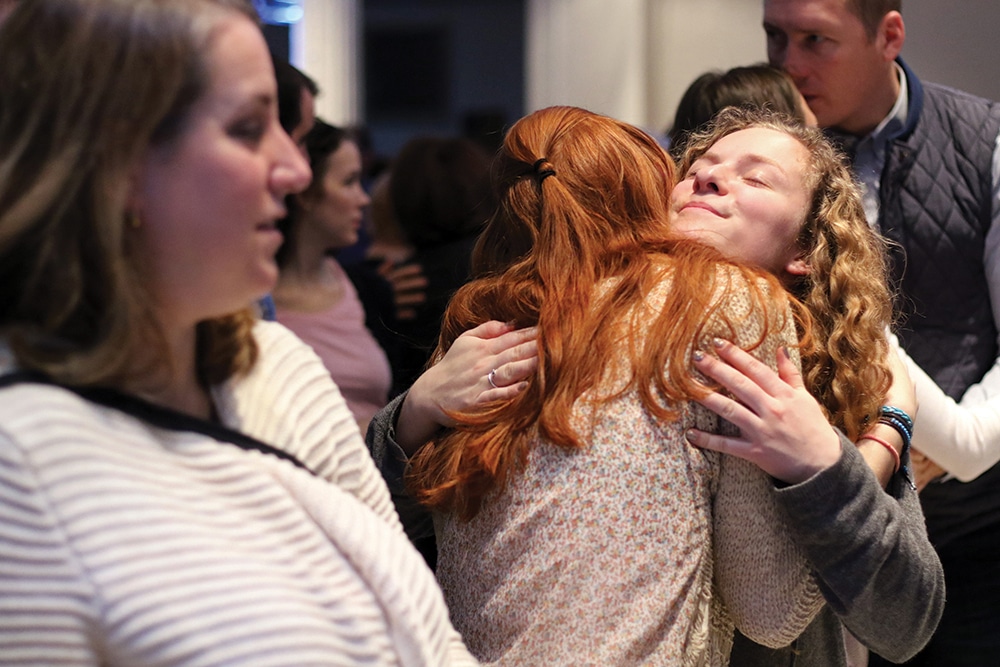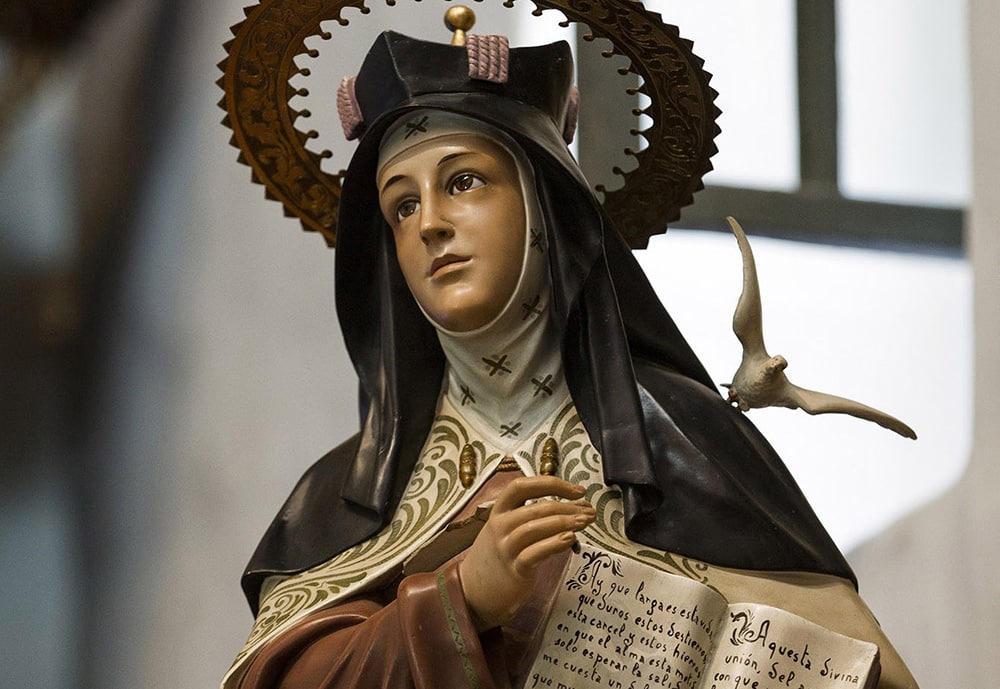Crisis after crisis, century after century, St. Michael the Archangel remains God’s warrior angel of peace. It was Michael who emerged from angelic obscurity to counter the rebellion of Lucifer and his minions. With his name meaning “Who is like God?,” translated from the Latin, Quis ut Deus?, Michael destroyed Lucifer’s cry of “Non Serviam!” — “I will not serve!” — so much so that Christ himself declared, “I have observed Satan fall like lightning from the sky” (Lk 10:18).
St. Michael’s thwarting of the evil one and all his works did not cease with the battle in heaven, of which the Book of Revelation speaks: “Then war broke out in heaven; Michael and his angels battled against the dragon. The dragon and its angels fought back, but they did not prevail and there was no longer any place for them in heaven. The huge dragon, the ancient serpent, who is called the Devil and Satan, who deceived the whole world, was thrown down to earth, and its angels were thrown down with it” (Rv 12:7-9).
Each human soul is a battleground, one in which Satan hopes to deceive and seduce. It is one, as Pope Francis said, that is “waged every day: It is waged in the heart of men and women.” Knowing that he was already defeated and will never topple God, Satan still hopes to lure souls blinded by ego and lust for sin in his feckless pursuit to turn hearts and minds away from God.
The virtues of St. Michael the Archangel always outweigh and outshine the hidden world of sin. Michael’s pursuit of those who decried God was not of vainglory, but of loyalty, humility and ceaseless faith — weapons more powerful than anything Satan can summon.
And not just Satan, but the tribulations wrought by life itself: even amid health crises, plagues and pandemics, the divine Godhead continually sent St. Michael to offer courage and hope to a suffering people. His enduring presence, even when a situation seemed dire or hopeless, reinvigorated the faithful to stand firm, together, and to put on the armor of God (cf. Eph 6:10).
In the COVID-19 pandemic of 2020, where millions around the globe contracted the virus, hundreds of thousands died from it, and scores of families and livelihoods are thrown into turmoil because of it, St. Michael the Archangel once again stands ready, eager to defend us in battle.
Here are a few examples throughout Church history when St. Michael interceded during times of plagues.
Rome, 590
It was the time of the Dark Ages. Pope Gregory’s immediate predecessor, Pelagius II, succumbed to the plague rampaging through the Eternal City. With little material aid left to help the Roman people, Gregory had recourse to spiritual sustenance.
On the morning of April 25, 590, the pope led a penitential procession through the abandoned streets — an image Pope Francis echoed in his walking pilgrimage of an abandoned Rome on March 15, 2020 — that had decimated its people. On the modern Church calendar, April 25 is known as the feast of St. Mark, but that particular day initially became the date designated by Pope Gregory as the Greater Litanies. On this April 25, as the pope carried the holy icon of Our Lady of Santa Maria Maggiore, so sick were the people even some in the procession collapsed. While the procession crossed the Aelian Bridge over the Tiber, in the shadow of Hadrian’s tomb — the massive, imposing fortress built for the Roman Emperor Hadrian in A.D. 135 — a heavenly choir, intoning the Regina Caeli, directed the procession’s gaze skywards. According to the Legenda Aurea, an immensely popular collection of stories gathered by chronicler-priest (and archbishop of Genoa) Jacobus Voragine (1228-98), Gregory then saw above Hadrian’s mausoleum the sight of the glorious and fearless St. Michael in the process of cleaning blood from his sword and sheathing it. It is believed the plague ended at that moment.
Today, we know Hadrian’s tomb as Castel Sant’Angelo, and the Roman sky is punctuated with a statue of St. Michael atop its parapet.
Mexico, 1631
In 1631, a plague devastated Mexico. In the village of San Bernabe in the small state of Tlaxcala, the Greater Litanies procession was held on April 25, just as Pope Leo oversaw on that very day in 590. And just as the plague ravaged the Roman people that year, in 1631, smallpox crippled the municipality of Nativitas. Among those who suffered from the disease was a 17-year-old boy, Diego Lazaro. Nevertheless, Diego participated in the solemn procession. And just as on April 25, 590, St. Michael appeared, but only to Diego Lazaro. In the apparition, Michael gave Diego directions to where a spring of water will cure those affected by smallpox. Yet Diego Lazaro chose to ignore the encounter. His condition worsened, and he was anointed and given the last rites. At that moment, Michael appeared again, transporting Diego to the location of the miraculous spring.
The date of this second apparition to Diego Lazaro was May 8, 1631, another feast day for St. Michael in the Church calendar. The miraculous spring was soon publically discovered, and three official investigations concluded Diego was not fabricating the story. Health returned to the inhabitants of the region, and the spring was named St. Michael’s Well. Today, the area in Nativitas where Diego Lazaro brought hope to his afflicted people is known as San Miguel del Milagro — the Miracle of St. Michael.
Gargano, 1656
The sanctuary to St. Michael on Monte Gargano in Italy is the oldest shrine dedicated to the archangel in western Christendom. In 1656, a plague ravaged the inhabitants of the region. Bishop Alfonso Puccinelli appealed to St. Michael for some kind of supernatural intervention, if it be God’s will, through prayer and fasting. At dawn on Sept. 22, Michael appeared to the bishop while he prayed in his room, instructing him to engrave a symbol on the grotto stones.
Bishop Puccinelli was then to bless the stones and deliver them to the people of the region. Whoever possessed such a stone would be spared from the pestilence. Soon after, the plague passed over. In gratitude, Bishop Puccinelli ordered a monument constructed placed in the town square, the inscription reading:
Venerable Philomena de Santa Colomba
A holy woman recognized as Venerable by Pope Leo XIII was instrumental in instilling devotion to St. Michael in the 19th century. Philomena experienced visions, not unlike those granted to the peasant children of Fátima in the subsequent century: images of a world in chaos, of three-fourths of the world succumbing to plagues and violence. One vision even involved the pope himself, but Philomena was assured in the vision the pope would not be forced to flee from Rome, even if a nation would soon occupy the Eternal City in her lifetime. A year before Philomena’s death, St. Michael appeared to the young woman in another vision, instructing her: “[M]ake known to men the great power which I have with the Most High. Tell them to ask of me all they wish. Tell them that my power in favor of those devoted to me is without limit. Make known my greatness.”
God had been preparing Philomena for this mission, cultivating within her a particular devotion to the Sacred Heart of Jesus, Mary Immaculate and St. Michael. She is told: “This new Trinity must be blessed and glorified on earth, as is the Unity of the Three Divine Persons in Heaven. Happy the nation, happy the country or the monastery which shall be fired with this devotion.”
The greatness of St. Michael has been made known by Scripture, Church tradition, miracles, apparitions and ceaseless prayer. He remains ready to assist at this hour, at this time, if we but ask for his aid.
James Day is the author of “Saint Michael the Archangel” (OSV, $14.95).

